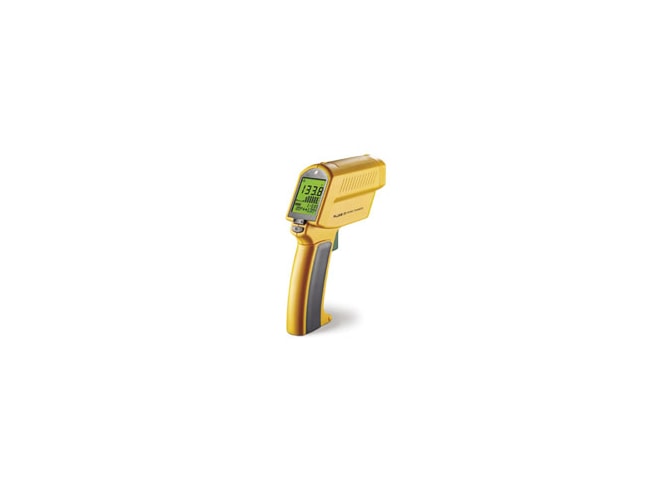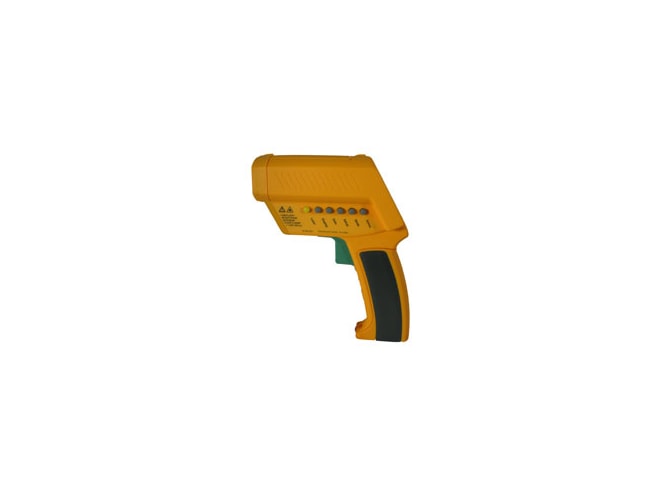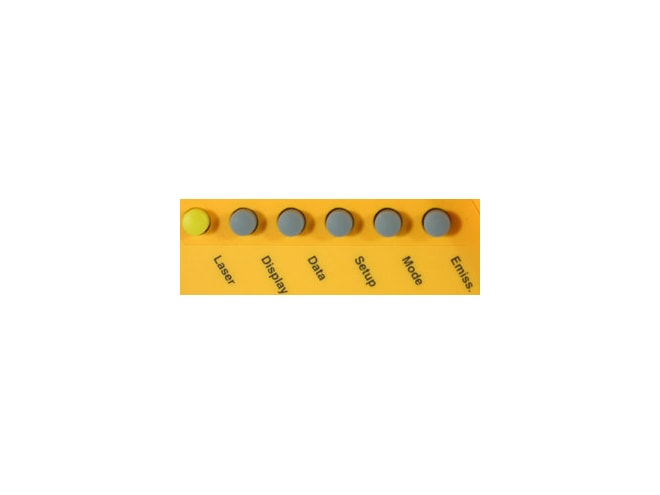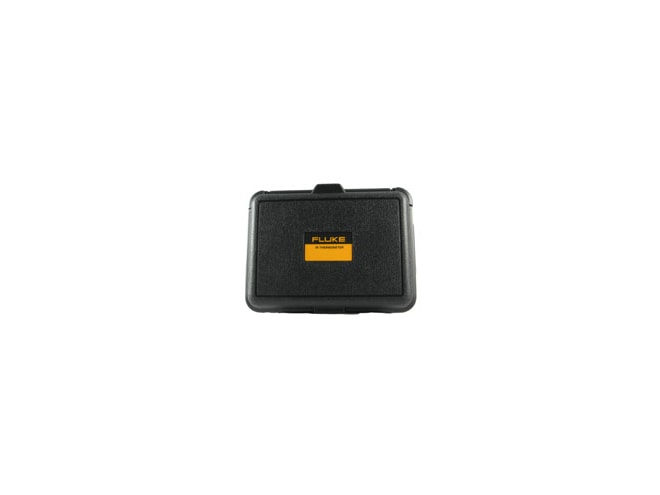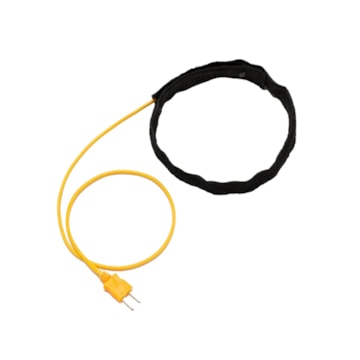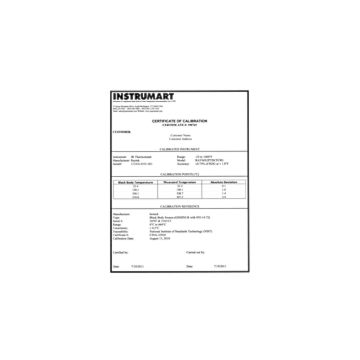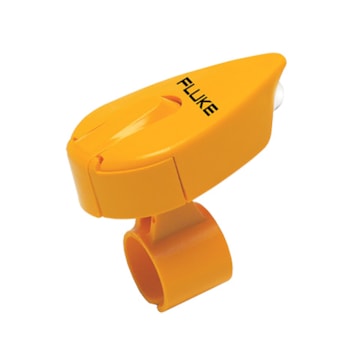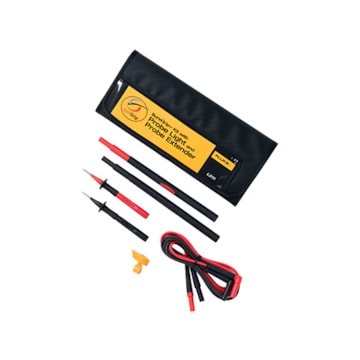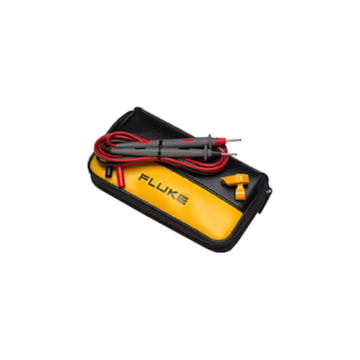Fluke 574 Infrared Thermometer
-25 to 1600°F, 60:1 (D:S), ±0.75% accuracy, laser sight, adjustable emissivity, hard case, data logging, RS232 PC interface, type K probe.
Overview
Features
- Broad Temperature range:-30°C to 900°C (-25°F to 1600°F)
- Advanced extra-bright three-dot laser sighting
- Advanced Display
- 100-point onboard temperature data logging capability
- 30 preset common material emissivity values
- Adjustable emissivity values (0.01 increments)
- Customizable log names, alarms, and emissivity
- Close Focus Option
Description
The handheld Fluke 574 infrared thermometer, one of the most advanced portable infrared thermometers in the industry, features a broad temperature range, superior optics, and an advanced extra-bright three-dot laser sighting system.
Accurate measurements depend in part on accurately sighting a target. Fluke 574 infrared thermometers have a sighting system designed to precisely track the infrared path as seen by the sensors. This enables the Fluke 574 infrared thermometer's advanced coaxial three-dot laser sighting to accurately show both the center and the edges of the spot being measured, regardless of the infrared thermometer's distance from the target.
The Fluke 574 infrared thermometer's laser sighting also appears twice as bright to the human eye as normal lasers (while maintaining the same safety rating as less bright lasers), making precise sighting easier in a variety of lighting conditions and distances.
Fluke 574 infrared thermometers feature a Close Focus (CF) option which lets you accurately measure very small areas at the focus point – where the IR beam narrows. Paired with the advanced coaxial laser sighting system, extremely small objects 0.24 in (6 mm) at 11.4 in (300 mm) can be easily measured with the Fluke 574 infrared thermometer.
The handheld Fluke 574 infrared thermometer is ideal for electrical maintenance and refrigeration troubleshooting.
Infrared Temperature Measurement - Technology Explained:
Infrared thermometers measure temperature from a distance by detecting the amount of thermal electromagnetic radiation emitted from the object being measured. This allows users to accurately measure surface temperatures in hazardous or hard-to-reach places, or other situations in which non-contact temperature measurement is desirable. Infrared thermometer technology is useful in a wide range of applications – including industrial, laboratory, food service, fire fighting, hobby, and home use.
While the technology is relatively simple, the myriad of names given to these devices can be confusing. "Laser Thermometers" makes reference to the laser that helps aim the thermometer. "IR Sensors" and "IR Thermometers" make use of a common abbreviation for "infrared". "Non-Contact Thermometers" is descriptive of the device's ability to measure temperature from a distance. "Radiation Pyrometers" is a scientific/technical term for these devices.
Documents
Accessories
Probes
Calibration
Accessories
Please consider these optional accessories.
Need Help? Call a Temperature engineer at 1-800-884-4967
We're open Mo-Th 8am to 5:30pm. Fr 8am to 5pm ET

